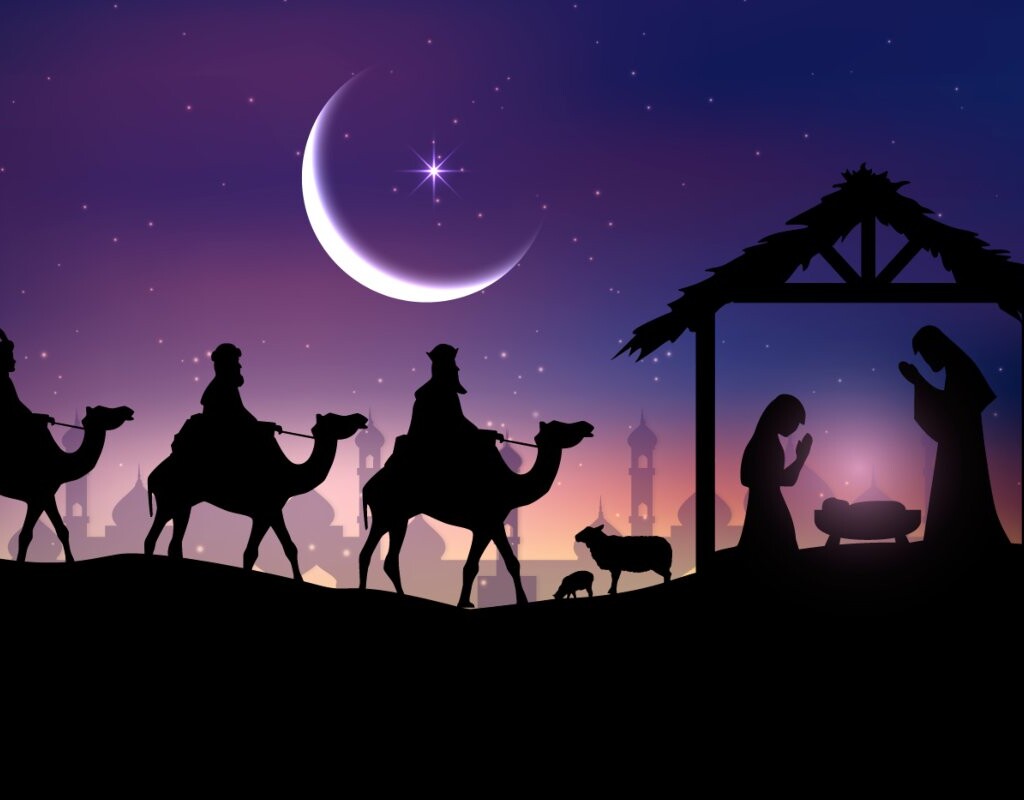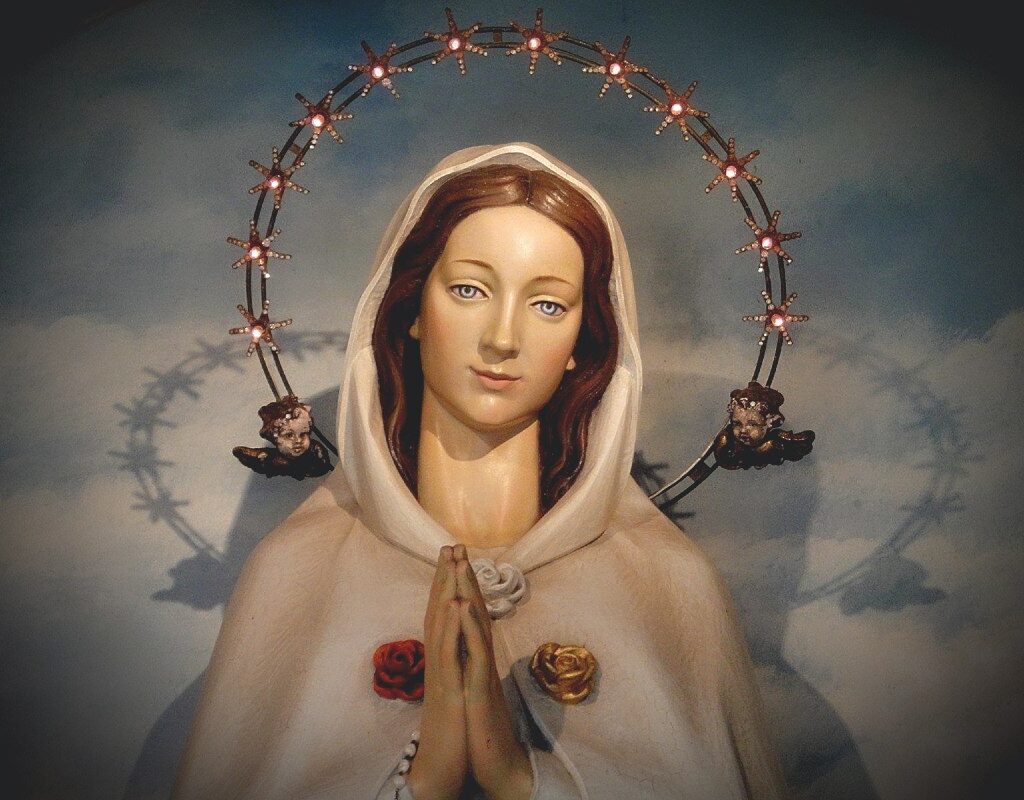The Three Magi, also known as the Three Wise Men, is a group of mysterious figures in the Bible who visited the infant Jesus. According to tradition, they brought gifts of gold, frankincense and myrrh.
Artistic Representations of the Three Magi Through Time
The Magi were said to have come from the East and their story has inspired many works of art and literature over the centuries. With origins shrouded in mystery, they remain a powerful symbol of faith and generosity.
The Three Magi, or Wise Men, have been popularly depicted in art for centuries. They are an important part of Christian tradition and are frequently referenced in the Bible. Throughout the ages, artistic representations of the Three Magi have varied significantly, reflecting the cultural and social norms of each era.
In early Christian art, the Three Magi often appear as three identical figures to emphasize their spiritual unity. This can be seen in a 6th-century painting from Saint Catherine’s Monastery in Sinai which shows them with beards and halos around their heads.
Later on, during the High Middle Ages, they were commonly portrayed as three distinct figures with individual characteristics such as clothing and facial features.
A notable example is Giotto di Bondone’s famous 14th-century fresco The Adoration of the Magi at Padua Cathedral which shows them wearing different robes and garments to signify their social status and wealth.
Renaissance period
During the Renaissance period, artists began to incorporate more symbolic elements into their works depicting the Three Magi such as gifts or stars used to represent divine guidance from Heaven.
Albrecht Dürer’s 16th-century painting The Adoration of The Kings is a prime example of this trend; it portrays each wise man presenting a gift to Jesus while being illuminated by a star above them – reflecting Dürer’s Protestant faith at that time.
Artistic depictions of The Three Magi continued to evolve throughout Baroque Art with artists like Peter Paul Rubens creating dynamic compositions full of movement and energy that focus on dramatic lighting effects or atmospheric perspectives like his painting The Adoration Of The Kings (1609).
In later eras such as Neoclassicism or Romanticism, we can see how these figures were placed in different contexts outside Biblical scenes such as John Singleton Copley’s 19th-century painting Watson And The Shark (1778) where they appear near Watson who survived a shark attack – although still following traditional iconography – highlighting both his courage and faith at that moment in time.
Today we still find depictions of the Three Wise Men but now they also come accompanied by other symbols from different cultures such as camels or elephants that represent not only religious but also cultural diversity; for instance, Alberto Martínez Fernández’s 2017 painting El Camino De Los Reyes (The Road Of Kings) shows us this trio riding on an elephant towards Bethlehem amidst vibrant colors which reflect both Mexican folklore traditions as well as Biblical imagery.
All these examples showcase how artistic representations related to these three important figures have changed over time due to sociocultural influences. Still, they remain meaningful symbols for many people worldwide today.
Following the Star: The Journey of the Three Magi
The story of the Three Magi, or wise men, is a well-known part of the nativity narrative.
According to the Gospel of Matthew, they followed a star to Bethlehem to pay homage to the newborn Jesus. While this tale has been told for centuries, the exact journey and identity of these mysterious figures remain shrouded in mystery.
The three wise men are thought to have come from an area now known as Iraq or Iran. They were likely members of a priestly caste trained in astrology and astronomy, which allowed them to discern that a special event was occurring due to a certain star appearing in the night sky.
This is why they referred to it as “the Star of Bethlehem” when recounting their journey.
After following this star for many miles over deserts and hills, the Magi eventually arrived at Bethlehem where they offered gifts of gold, frankincense and myrrh before making their return journey home.
The exact route taken by them on this voyage remains unknown; however, it is assumed that they would have followed similar paths used by traders in antiquity between Mesopotamia and Palestine.
While much about their journey has been lost to time, we can still look upon these iconic figures with admiration for their courage and faithfulness as they undertook such an arduous trek two thousand years ago.
Their pilgrimage stands testament not only as one of history’s most enduring tales but also as an inspiring reminder that true devotion can overcome any obstacle we may face on our journeys through life.
Exploring the Gifts of the Three Magi
The Three Magi, also known as the Three Wise Men, has been a source of fascination for generations.
The Bible does not mention their names or exact number, but it is widely accepted in the Christian tradition that they were three wise men who followed a star to Bethlehem and brought gifts of gold, frankincense and myrrh to the infant Jesus.
The symbolism of their gifts has been widely interpreted over the centuries. Gold has long been associated with royalty and was given as a symbol of Jesus’ kingship.
Frankincense was used in religious ceremonies and was given as a sign of divinity. Myrrh is an aromatic resin used in embalming and was seen as symbolic of Jesus’ mortality.
In addition to these symbolic interpretations, each gift contains its inherent value for those seeking spiritual guidance today. Gold stands for wealth on many levels: mental, physical, emotional and spiritual abundance.
Frankincense encourages us to take time for contemplation and reflection; it invites us to pause frequently throughout our day so that we can be more mindful of our choices.
Myrrh reminds us that even when life feels difficult or painful there are opportunities for growth through suffering; it teaches us how to transform pain into wisdom while still honoring our humanness.
The gifts of the Three Magi remind us that God is with us always; we need only open ourselves up to receive his grace and blessings at any moment in time or any place on earth.
By looking back at these ancient symbols – gold, frankincense and myrrh – we can gain insight into how we can live richer lives filled with intention, purpose and joy today.
The History and Symbolism of the Three Magi
The three Magi, or wise men, are a well-known part of the story of the birth of Jesus. The Bible does not provide much detail about them or their origin, but they have become a powerful symbol throughout many cultures and religions.
In the Biblical account of Jesus’ birth, found in the Gospel of Matthew (2:1-12), it states that “wise men from the East” followed a star to Bethlehem to honor the newborn king.
This is why they are often referred to as “the Three Magi”—a term derived from the Latin word magus meaning “magician” or “wise man.”
The Bible does not specify their number or give any other details about them, but it is generally accepted that three wise men brought gifts for Jesus: gold, frankincense and myrrh.
The symbolism behind these three gifts is rich and varied. Gold symbolizes kingship and wealth; frankincense was used in religious ceremonies as an offering to God; and myrrh was used in funeral rituals as an anointing oil for burial preparation.
Together, these three gifts represent perfect homage to Christ—as both King and Savior—and signify his ultimate sacrifice on behalf of humanity.
Over time, depictions of the Magi have come to represent different aspects of Christian spirituality. In artwork they usually appear together as kings wearing elaborate robes and crowns, with each bearing one of their symbolic gifts for Jesus; however, some artworks show them dressed more simply or individually presenting their respective gifts—symbolizing humility before God and obedience to his will.
In addition to being venerated in Christianity as symbols of faithfulness and devotion, the Three Magi are also celebrated by other religions such as Islam and Zoroastrianism through various stories associated with them.
In all cases, they serve as timeless reminders that divine guidance can be found even in unlikely places at unexpected times if one follows one’s heart with steadfast faithfulness.
Conclusion
The Three Magi exemplify the power of faith and determination, showing us that with a combination of wisdom, courage and perseverance, anything can be achieved.
Whether they were real or mythical figures, their story is an inspiring one that has endured for centuries as a symbol of hope and faith in the face of adversity. The Three Magi remind us that we should never give up on our dreams no matter how difficult they may seem.




